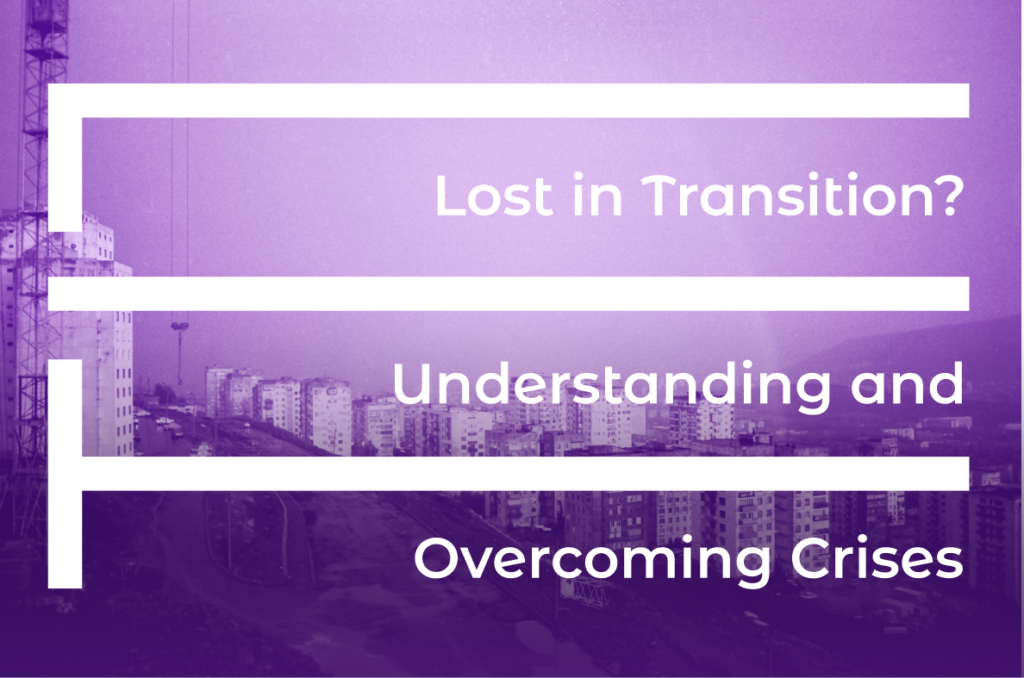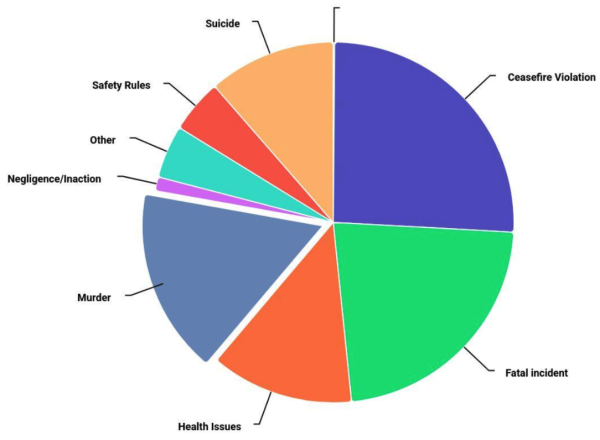
Armenia – Eyewitnesses
Lala Aslikyan is an Armenian human rights activist. Since the late 1990s she has been very active in different civil society initiatives aimed at promotion and protection of civil and political rights, including but not limited to women rights, the rights of LGBT people, and the rights of the soldiers serving in the Armenian Army. In this interview with journalist and a younger activist Ruben Banuchyan, Lala tells about her involvement in different civic initiatives and movements in Armenia, and particularly about Civic Initiative “The Army in Reality”. She shares her views and believes on activism, political stance, values, etc.
Initiated in 2011 in response to human rights violations, high number of suicides and other non-combat fatalities in the Armenian Army, The Army in Reality is a group of activists who aim at promotion and protection of human rights in the Armenian armed forces and adequate detection and punishment of cases of human rights violations.
Isabella Sargsyan is a human rights expert with over 24 years of experience. She holds degrees from Yerevan State University and the London School of Economics. Since 2008, she has worked at the Eurasia Partnership Foundation (EPF), leading advocacy efforts with the UN, OSCE, and Council of Europe, and representing EPF in public councils in Armenia. An expert on Freedom of Religion or Belief, Isabella advises governments and civil society across OSCE countries. In 2017, she was awarded the Freedom Defender Award. She also serves on the board of Transparency International Armenia.
Tasks
Lala Aslikyan
Topic: Human rights, human rights in the armed forces, civic activism
Abstract: In this learning activity, students will gain a broader understanding of democratic processes in Armenia through analyzing human rights issues in the army as well as civic activism/initiatives aimed at raising awareness around and addressing these issues. Students will discuss the transition to democracy, activism and human rights, as well as evaluate how the war affected and continues to affect Armenian society today.
Key question: Why is it important to have an active civic stance in a democratic society?
Learning outcomes:
Students will be able to:
- Work with witness accounts and other primary sources.
- Use different types of sources to justify their opinions and positions regarding different issues.
- Discuss the fundamental values that make people active citizens.
Step 1: Brainstorming (10 minutes)
The purpose of the activity is to evoke an interest in the topic. The teacher shows the students the data/chart on the number of fatalities in the Armenian army in non-combat situations since 1994 . She explains the chart and the numbers. Students should then answer the following questions:
- What does this chart tell us?
- What is the largest percentage of fatalities?
- Why, and what do you think of this?

Please, visit the website www.safesoldiers.am to analyze/compare the data for 2020-2024
The Number of Armenian Army Fatalities in Non-Combat Situations
1994 (the end of first Karabakh War)- 2025
1521 fatalities
Step 2: Introducing the Witness (5 minutes)
The teacher introduces the witness based on information provided in the interview, as well as the text accompanying it.
Step 3: Watching and discussing an excerpt (0:28-6:13) from the video (10 minutes)
After watching the excerpt, the teacher stops the video and discusses the following questions one by one (each question is printed on a different paper and papers are shown one by one, not together):
- Why did Lala get involved in civic activism?
- How is it related to democratic transition?
- How does Lala define activism?
Step 4: Watching and discussing an excerpt (8:18-11:14) from the video (5 minutes)
After watching the excerpts, the teacher stops the video and discusses the following question:
- Why is civic activism important?
Step 5: Watching and discussing an excerpt (11:15- 25:13) from the video (20 minutes)
After watching the excerpt, the teacher asks the following questions:
- Who was involved in the initiative/movement?
- What were the issues raised by the initiative?
- Did they succeed in solving those?
- If yes, how?
- What were some of the tools they used?
- What were they able to change? What is still unresolved?
Step 6: Brainstorming (10 minutes)
The purpose of the activity is to provide some background information and basic facts and link the topic to our 3Ds. The teacher one by one asks the following questions to students, and after collecting their answers to each question, shows the respective slide in the Appendix (Click to download) and explains it.
- Question for Slide 1: What does the army have to do with decolonization?
- Question for Slide 2: What is the link between demography and the army?
- Question for Slide 3: How does democracy relate to the army?
Step 7: Analysis and Interpretation (30 minutes)
The purpose of this activity is for students to analyze and interpret the interview after they have read additional sources. Students are split into 3 groups.
Group 1 reads the following calls and/or statements by the “Army in Reality” in 2013.
- The Army in Reality asks the Candidates for Presidency
- The Army in Reality Initiative’s Call on the Day of Army
- The Army in Reality Initiative’s Statement on Mataghis
Group 2 reads the following articles on Mataghis Case:
Group 3 reads the following sources:
- https://www.7or.am/am/news/view/46291/
- https://www.azatutyun.am/a/25246897.html
- https://safesoldiers.am/595.html
Then each group answers the following questions based on the additional material they have read:
- What were the main issues raised by the “Army in Reality” initiative?
- What were the tools used by the initiative?
- Where did they succeed?
Isabella Sargsyan
Urban Activism, Human Rights, Cultural Rights
Abstract: In this learning activity, students will gain a broader understanding of urban activism in Armenia through analyzing issues related to urban planning, cultural heritage, property rights, economic transition and civic activism/initiatives related to these processes. Students will discuss the transition to a market economy and some of the issues during that process, as well as activism, urban activism and cultural and environmental rights. They will evaluate what the adverse impacts of the neoliberal urban development/transition were in Armenia.
Key question: Why is it important to have an active civic stance on matters related to our physical and natural environment?
Learning outcomes: Students will be able to:
- Work with witness accounts and other primary sources.
- Use different types of sources to justify and present their opinions and positions regarding different issues.
- Discuss the fundamental values that make people active citizens.
Step 1: Brainstorming (10 minutes)
The purpose of the activity is to stimulate interest in the topic. The following question (slide 1, Appendix 1) appears on the screen and the teacher asks one of the students to write down answers on a flipchart:
- What is urban activism?
After gathering as many answers as possible, the teacher shows some definitions of urban activism on the screen (slide 2, Appendix 1).
Step 2: Introducing the Witness (5 minutes)
The teacher introduces the witness based on information provided in the interview, as well as the text accompanying it. The teacher can also print Appendix 1 and give it to the students.
Step 3: Watching and discussing an excerpt (22:22-28:05) from the video (10 minutes)
After watching the excerpt, the teacher stops the video and asks the following questions:
- What is urban activism according to Isabella?
- How is the organization of urban space connected to our life?
Step 4: Watching and discussing an excerpt (2:36- 7:04) from the video (10 minutes)
After watching the excerpt, the teacher stops the video and asks the following questions:
- According to Isabella, what were the main impacts of the transition on Yerevan’s urban space and residents?
- What are the main issues identified by Isabella?
The teacher writes down answers on a flipchart.
Step 5: Watching and discussing an excerpt (8:34-13:34) from the video (10 minutes)
After watching the excerpt, the teacher stops the video and discusses the following question:
- How did Isabella get involved in urban activism and why?
- What was the turning point for her?
Step 6: Watching and discussing an excerpt (15:53-18:03) from the video (10 minutes)
After watching the excerpt, the teacher asks the following questions:
- What did Isabella and her friends succeed in?
- What did they not succeed in and why?
Step 7: Group work (20 minutes)
The purpose of the activity is to link the topic to our topical framework of the “3Ds”: democratization, decolonization and demographic change. Following the discussion of the excerpts, the teacher splits the students into 3 groups: democracy, demography and decolonization respectively. Each group receives a flipchart and a printed text on its respective topic (Appendix 2). The following questions/tasks are also given to the groups and they have to answer these within 12 minutes:
Group 1: After reading the text you have received, please let us know if there are processes/issues/challenges Isabella mentioned that are related to democracy.
Group 2: After reading the text you have received, please let us know if there are processes/issues/challenges Isabella mentioned that are related to decolonization.
Group 3: After reading the text you have received, please let us know if there are any processes/issues/challenges Isabella mentioned that are related to demography.
The groups are then invited to present their answers (8 minutes).
Step 8: Work with visual sources (5 minutes)
The teacher puts some photos (examples are provided in Appendix 3) on the table that illustrate different aspects of changes to Yerevan’s urban space (the photos in the Appendix 3 are related to the “3D” project theme). The students are asked to choose the photos that represent/illustrate the themes of democracy, decolonization and demography and post them on the corresponding flipchart of the groups.
Step 9: Reflection (10 minutes)
At the end of the session, the teacher asks the students to reflect on the following:
- What have I learned?
- Why is it important to be active in the issues related to my place of residence?
